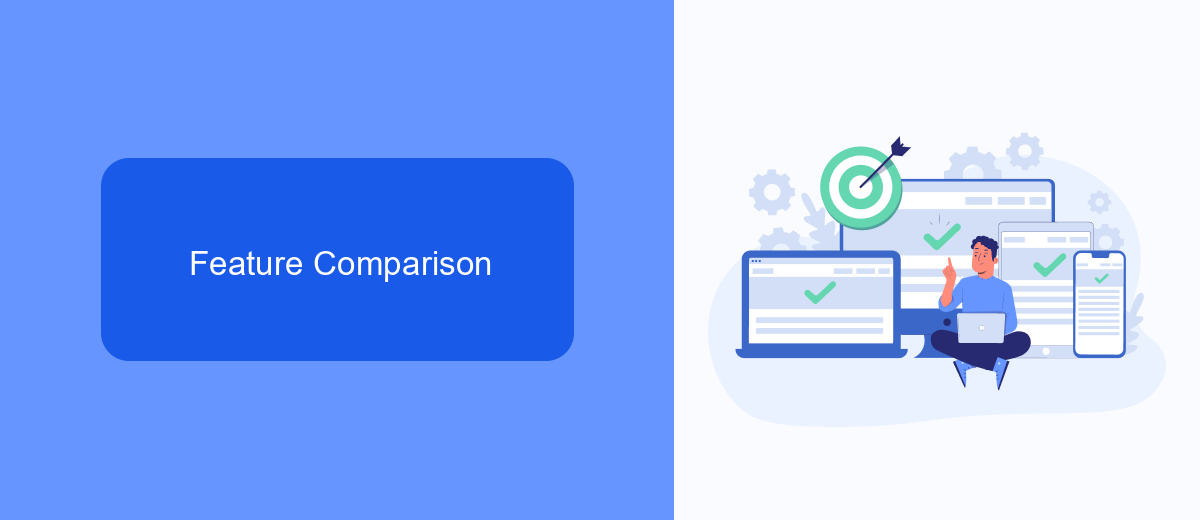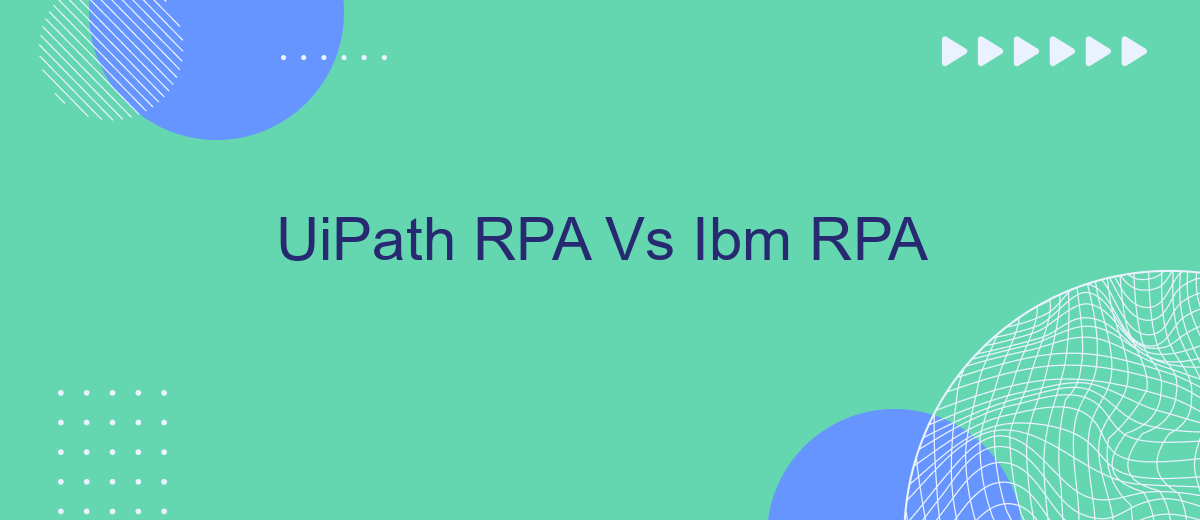In the rapidly evolving world of automation, choosing the right Robotic Process Automation (RPA) tool is crucial for businesses aiming to enhance efficiency and reduce operational costs. This article delves into a comparative analysis of two leading RPA platforms, UiPath and IBM RPA, examining their features, capabilities, and overall performance to help organizations make an informed decision.
Introduction
Robotic Process Automation (RPA) has become a cornerstone for businesses aiming to streamline operations and boost efficiency. UiPath and IBM RPA are two leading platforms in this domain, each offering unique features and capabilities to help organizations automate repetitive tasks. This article delves into a comparative analysis of these two RPA giants, highlighting their strengths and potential drawbacks.
- UiPath: Known for its user-friendly interface and extensive community support.
- IBM RPA: Renowned for its robust integration with IBM’s suite of enterprise solutions.
- Both platforms offer powerful automation tools but cater to different business needs and scales.
Choosing the right RPA tool can significantly impact your business's efficiency and scalability. Whether you prioritize ease of use or deep integration with existing systems, understanding the nuances of UiPath and IBM RPA will help you make an informed decision. Additionally, leveraging integration services like SaveMyLeads can further enhance your automation strategy by seamlessly connecting various applications and data sources.
Feature Comparison

When comparing UiPath RPA and IBM RPA, one of the primary differences lies in their user interfaces. UiPath offers a highly intuitive, user-friendly interface that is designed for both developers and business users, making it easier for non-technical staff to create and manage automation workflows. IBM RPA, on the other hand, provides a more complex interface that may be better suited for users with a technical background, offering advanced customization options and deeper integration capabilities with other IBM products.
Another critical distinction is in their integration capabilities. UiPath supports a wide range of third-party integrations and provides seamless connectivity with various applications and services. For instance, tools like SaveMyLeads can be used to streamline the integration process, allowing businesses to automate data transfer between different platforms effortlessly. IBM RPA also offers robust integration options but is particularly strong in integrating with other IBM solutions, making it a preferred choice for enterprises already invested in the IBM ecosystem.
Benefits and Drawbacks

When comparing UiPath RPA and IBM RPA, both platforms offer unique benefits and drawbacks that cater to different business needs. Understanding these can help organizations make informed decisions.
- UiPath RPA:
- Benefits: User-friendly interface, extensive community support, and a wide range of integrations.
- Drawbacks: Can be costly for smaller businesses, and sometimes requires advanced technical skills for complex automations.
- IBM RPA:
- Benefits: Strong AI capabilities, robust security features, and seamless integration with other IBM products.
- Drawbacks: Steeper learning curve, higher initial setup costs, and less community support compared to UiPath.
Both UiPath and IBM RPA offer powerful tools for automating business processes. For companies looking to streamline integrations, services like SaveMyLeads can simplify connecting various applications, enhancing the overall efficiency of RPA implementations.
Case Studies

In a recent study, a leading financial institution implemented UiPath RPA to automate their customer service operations. The results were impressive, with a 40% reduction in response time and a significant improvement in customer satisfaction. The institution was able to streamline their processes, allowing employees to focus on more complex tasks.
On the other hand, a large manufacturing company opted for IBM RPA to optimize their supply chain management. By automating repetitive tasks, they achieved a 30% increase in efficiency and reduced operational costs by 25%. The company also integrated IBM RPA with SaveMyLeads to ensure seamless data transfer between various platforms.
- UiPath RPA: 40% reduction in response time for customer service.
- IBM RPA: 30% increase in supply chain efficiency.
- SaveMyLeads: Enhanced data integration for both solutions.
Both case studies highlight the significant benefits of RPA implementation. While UiPath excels in customer service automation, IBM RPA proves its worth in optimizing supply chain operations. The integration capabilities of SaveMyLeads further enhance the effectiveness of these RPA solutions, ensuring seamless workflow and data management.
Conclusion
In conclusion, both UiPath RPA and IBM RPA offer robust solutions for automating business processes, each with its unique strengths and features. UiPath stands out for its user-friendly interface and extensive community support, making it an excellent choice for organizations looking for quick implementation and scalability. On the other hand, IBM RPA excels in integrating with other IBM products and services, providing a comprehensive ecosystem for enterprises already invested in IBM technologies.
When considering integration capabilities, it's essential to look at tools like SaveMyLeads, which can simplify and enhance the integration process for both platforms. SaveMyLeads allows businesses to seamlessly connect their RPA solutions with various third-party applications, ensuring a smooth data flow and operational efficiency. Ultimately, the choice between UiPath and IBM RPA will depend on your specific business needs, existing infrastructure, and long-term automation goals.
- Automate the work with leads from the Facebook advertising account
- Empower with integrations and instant transfer of leads
- Don't spend money on developers or integrators
- Save time by automating routine tasks
FAQ
What is the main difference between UiPath RPA and IBM RPA?
Which platform is better for small to medium-sized businesses?
How do both platforms handle integration with third-party applications?
What are the licensing and cost considerations for UiPath RPA vs. IBM RPA?
Which platform offers better customer support and training resources?
What do you do with the data you get from Facebook lead forms? Do you send them to the manager, add them to mailing services, transfer them to the CRM system, use them to implement feedback? Automate all of these processes with the SaveMyLeads online connector. Create integrations so that new Facebook leads are automatically transferred to instant messengers, mailing services, task managers and other tools. Save yourself and your company's employees from routine work.

